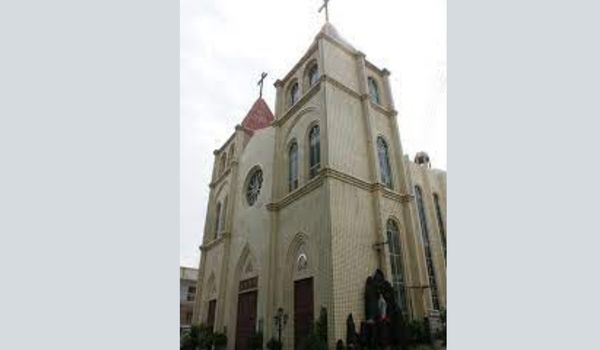
In a land area of approximately 340,000 square kilometers, the diocesan territory covers the prefecture-level cities of Bayannur and Wuhai, and Alxa League in western Inner Mongolia Autonomous Region.
In the Census of 2000, Bayannur has 1,682,662 inhabitants, Wuhai has 427,553 and Alxa has 196,279, adding up to about 2,430,000 people in the diocesan territory. The largest ethnic group is Han Chinese (more than 90 percent) and the 29 minorities include Mongols, Hui, Manchu, Tujia and Tibetans.
Mandarin Chinese, Northeast and Mongol dialects are in use in the diocesan territory.
Catholicism was introduced to Mongolia in 1830s. The Holy See entrusted the extensive area to the Congregation of the Immaculate Heart of Mary (popularly called Scheut Fathers) in 1864. The Vicariate Apostolic of Southwestern Mongolia was erected in 1883 and it was divided into Ningxia and Suiyuan (Hohhot) vicariates in 1922.
Bameng diocese, formerly a district in Ningxia diocese, was created in the open Church structure in 1990. Bishop Francis Xavier Guo Zhengji was its first bishop with the Sanshenggong Church in Dengkou county as his cathedral. His successor Bishop Matthias Du Jiang was clandestinely consecrated four days after Bishop Guo died in May 2004. He got government recognition and began to work openly in April 2010. The cathedral is now moved to the Shaanba Church in Hanggin Rear Banner, Bayannur City.
Bayannur is easy of access. It has railway and highways to North China and Northwest China. No.110 National Highway, Baotou-Lanzhou Railway and Dandong-Lhasa Expressway are its main traffic lines as well as the main channels of entry and exit of Bayannur by tourists, near to Baotou Airport and Yinchuan Airport, it has developed into the major distributing center of domestic and foreign tourists. Wuhai Airport is only 45 kilometers far from Dengkou, which can promote the development of tourism in Bayannur through bring numerous tourists from at home and abroad.
Bayannur belongs to the temperate continental monsoon climate, which features plentiful sunshine, low rainfall, high evaporation, strong sandy wind and short frost-free period. The city has distinct four seasons with the annual mean temperature of 3.7 to 7.6&Deg;C. The coldest month is January, with a daily mean of -11 to -15 &Deg;C, while the July, the hottest month, averages 20 to 24 &Deg;C. The annual mean temperature is 6.73 &Deg;C, and the annual precipitation is approximately 145.7 millimeters, with more than half of it falling in July and August alone.
In recent years, Bayannur vigorously promotes the industrialization process by relying on their advantages in resources, having achieved new breakthroughs in opening-up, yielded substantial results in investment promotion and made great strides in economic construction. With rapid development of such four pillar industries as agricultural and livestock products processing industry, metallurgical and mineral industries, chemical industry and electric power industry, it has also speeded up its industrialization and urbanization, resulting in that a large number of well-known domestic and foreign enterprises have settled down here and that the transformation from the agriculture-based economy to the industry-based economy has been started. A great upsurge in reform and construction has been aroused in Bayannur.
Bayannur is a prefecture-level city in western Inner Mongolia. Until Dec. 1, 2003, the area was called the Bayannur League. It borders Mongolia to the north, Alxa to the west, Ordos to the south and Baotou to the east. The name of the city in Mongolian means "Rich Lake."
Bayannur is a rich hotspot with magic landscape, with Yinshan Mountain spreading from west to east and towering at its hinterland, which is rich in mineral resources. At the northern foot of Yinshan Mountain is the Hetao (river bend) Plain, both flat and fertile. The Yellow River runs 345 kilometers across Bayannor and has made the Great Bend of the river a granary of 400 kilometer wide. Irrigated with the river water, it has won eminence as the key commodity grain base of the country.
With a long history, Bayannur has created the splendid Hetao Culture and colorful grassland civilization, carrying a heavy history. Since the Qin Dynasty (early 3th century BC), the Hetao area has become the key military base of the country to garrison the frontier and defend the country.
There are many historical and cultural relics still in existence, such as ancient tombs and an ancient town of Han Dynasty, the Great Wall of Qin and Han Dynasties, rock paintings in the Yinshan Mountains and the Agui Lamasery of the red sect, etc.